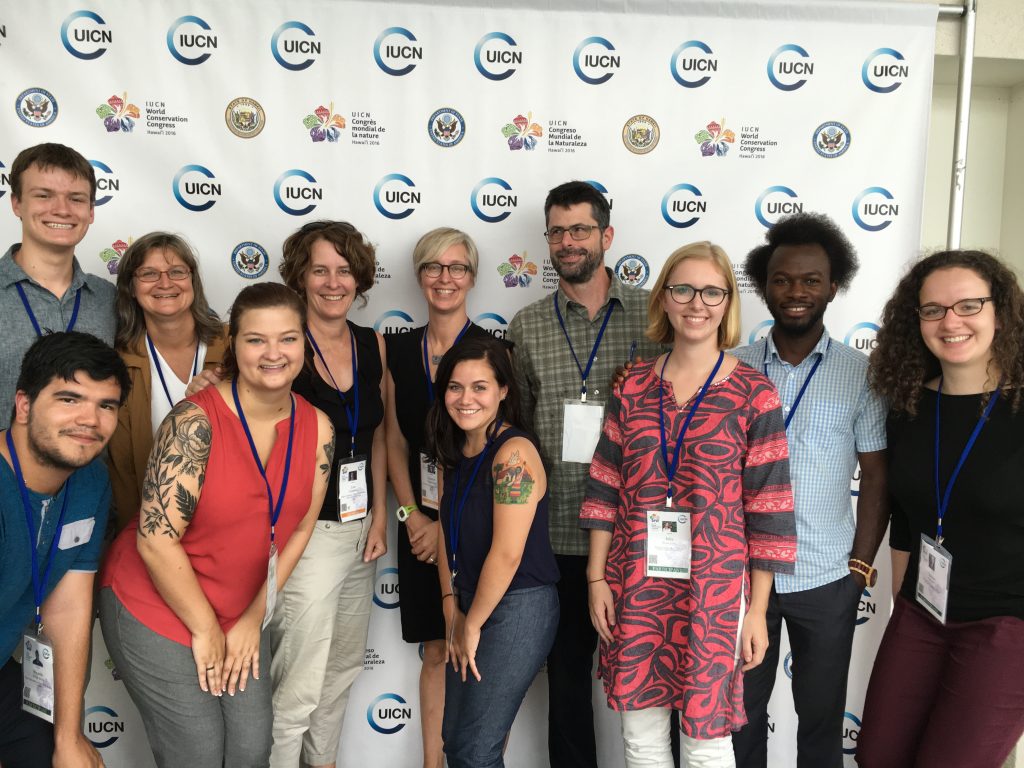Not just a meeting.
How international meetings shape our understanding of biodiversity, conservation, and global environmental governance.
Overview
Biodiversity conservation is a pressing global issue. Concerns about loss of species, habitats, and ecosystems are now amplified by climate change. International organizations coordinate actions, but progress remains illusive. Biodiversity conservation governance is difficult, in part because biodiversity is understood and valued differently by different stakeholders: governments, scientists, civil society organizations, non-government organizations, businesses, local people, and Indigenous peoples, among others. Key points of difference revolve around question such as:
- What is biodiversity and how do we know and value it?
- What is the best way to conserve biodiversity and for what purpose?
- Who or what is responsible for biodiversity loss?
- How can the costs and benefits of sustainable use, conservation, and/or biodiversity loss be more equitably distributed?
- How can global goals and priorities for biodiversity conservation be reconciled with the needs of people living with and dependent on biodiversity for their livelihoods?
International meetings are one place where diverse stakeholders assemble to debate such questions, and where debates are visible to researchers. Since 2008, we’ve been working together to study such meetings and innovate methods for doing so. This website overviews the theory, methods, and findings of our work in Collaborative Event Ethnography (CEE). Welcome!
Our Goals
We aim to advance our understanding of:
- Global environment governance
- Biodiversity conservation governance, both generally and in relation to specific topics (e.g. marine conservation, climate change), actors (e.g. states, NGOs, businesses), and types of knowledge (e.g. science, local, and Indigenous knowledge).
- How to study global processes that extend beyond any single geographic locale, such as biodiversity conservation governance.
- Collaborative research theory and reflexive practice that is supportive of group and individual intellectual engagement, inclusive of team members at different stages of career and with diverse experiences and perspectives, attentive to equitable distribution and recognition of labor, and supportive of collaborators as researchers and people.
Photo by Alenka Skvarc via Unsplash.
Who We Are
We are a group of scholars – anthropologists, geographers, political scientists, and inter-disciplinary social scientists – interested in global environmental governance, specifically for biodiversity conservation. In total to date, 46 researchers (on 73 person trips), from 6 countries and 14 institutions, have collaborated to study 6 international meetings.

The CEE Method
Collaborative Event Ethnography (CEE) builds on insights from multi-sited ethnography, including collaborative multi-sited ethnography, team ethnography and institutional ethnography to examine how actors who are normally dispersed in time and space come together at international conferences to facilitate, structure, and disseminate conservation paradigm shifts.
Photo by Kylie Lugo on Unsplash.
Why study meetings?
Global environmental meetings are sites where the politics of global biodiversity conservation can be observed; they offer points of entry or windows into global environmental governance.
Global environmental meetings are also moments when diverse actors, normally dispersed in time and space, come together to produce—through decisions, interpersonal relationships, information exchange, etc.—environmental governance.
– Campbell et al. 2014
Which meetings have we attended?
So far, we have attended six significant events in global environmental governance including:
2008 World Conservation Congress
2010 Conference of Parties to the Convention on Biological Diversity (CBD/COP10)
2012 United Nations Conference on Sustainable Development (Rio+20)
2014 Sixth World Parks Congress
2016 World Conservation Congress
Over the course of these events, we have iteratively refined the CEE methodology to generate an increasingly robust understanding of the dynamic processes that shape our understanding of biodiversity and conservation.
Photo by Raphael Nogueira on Unsplash.